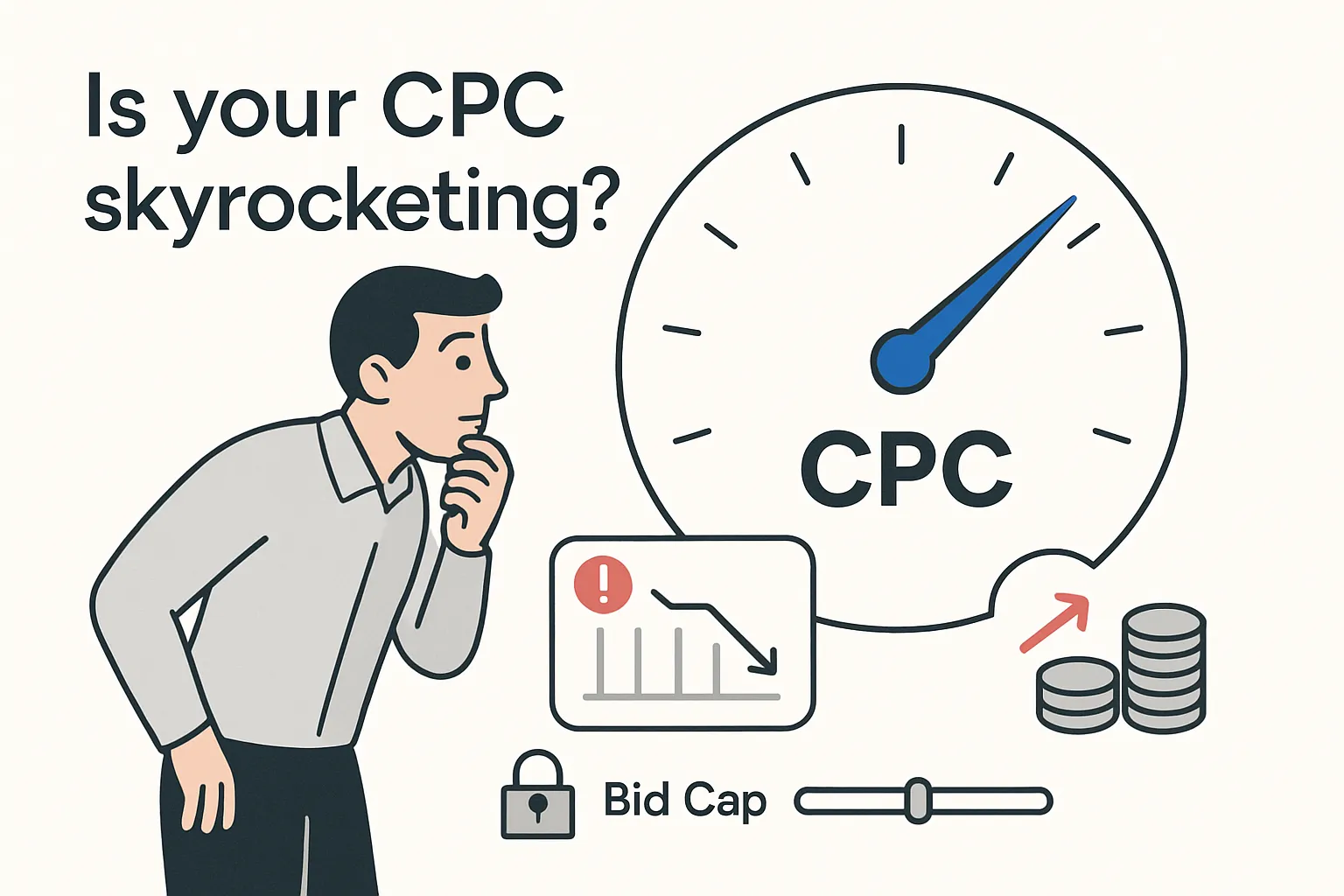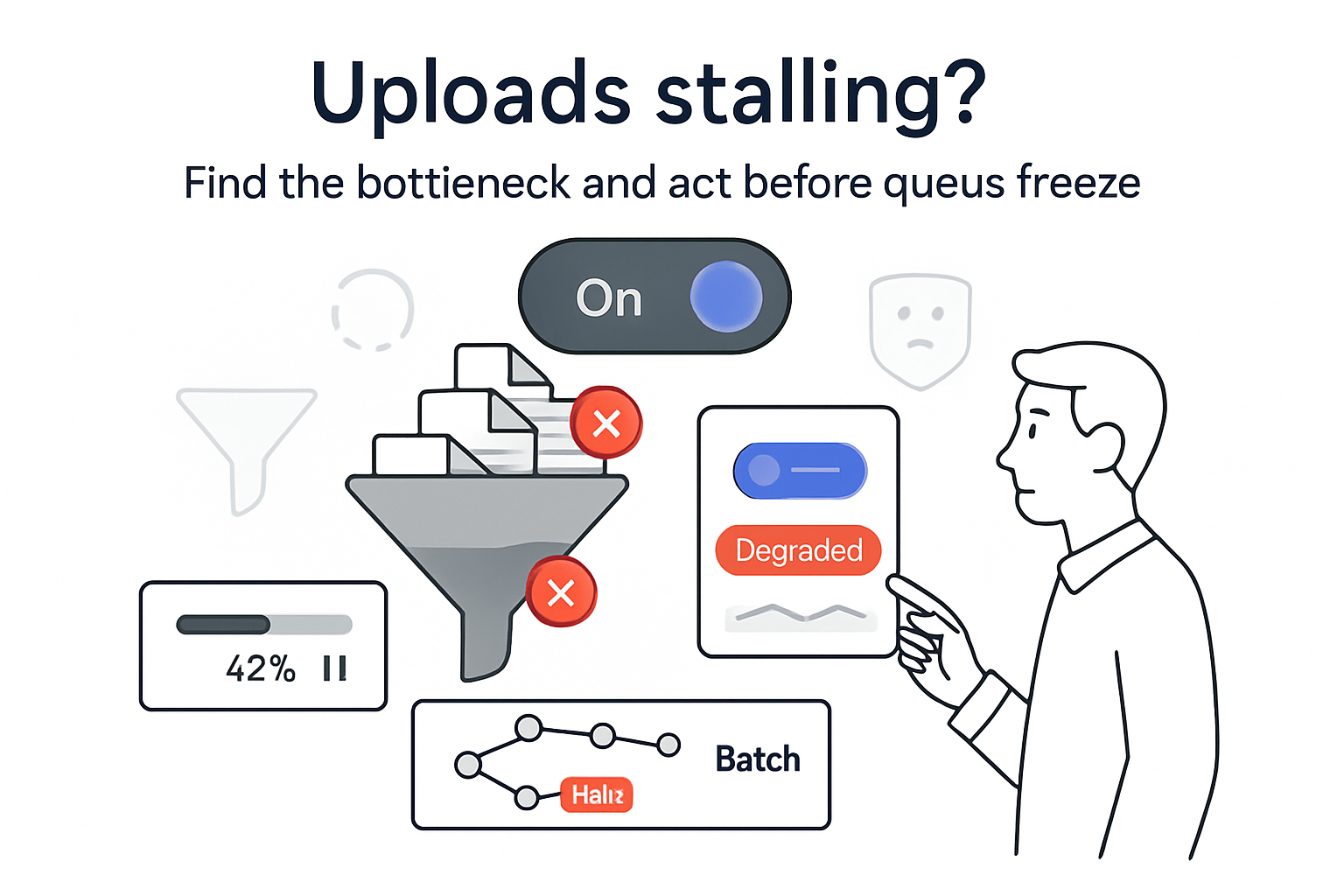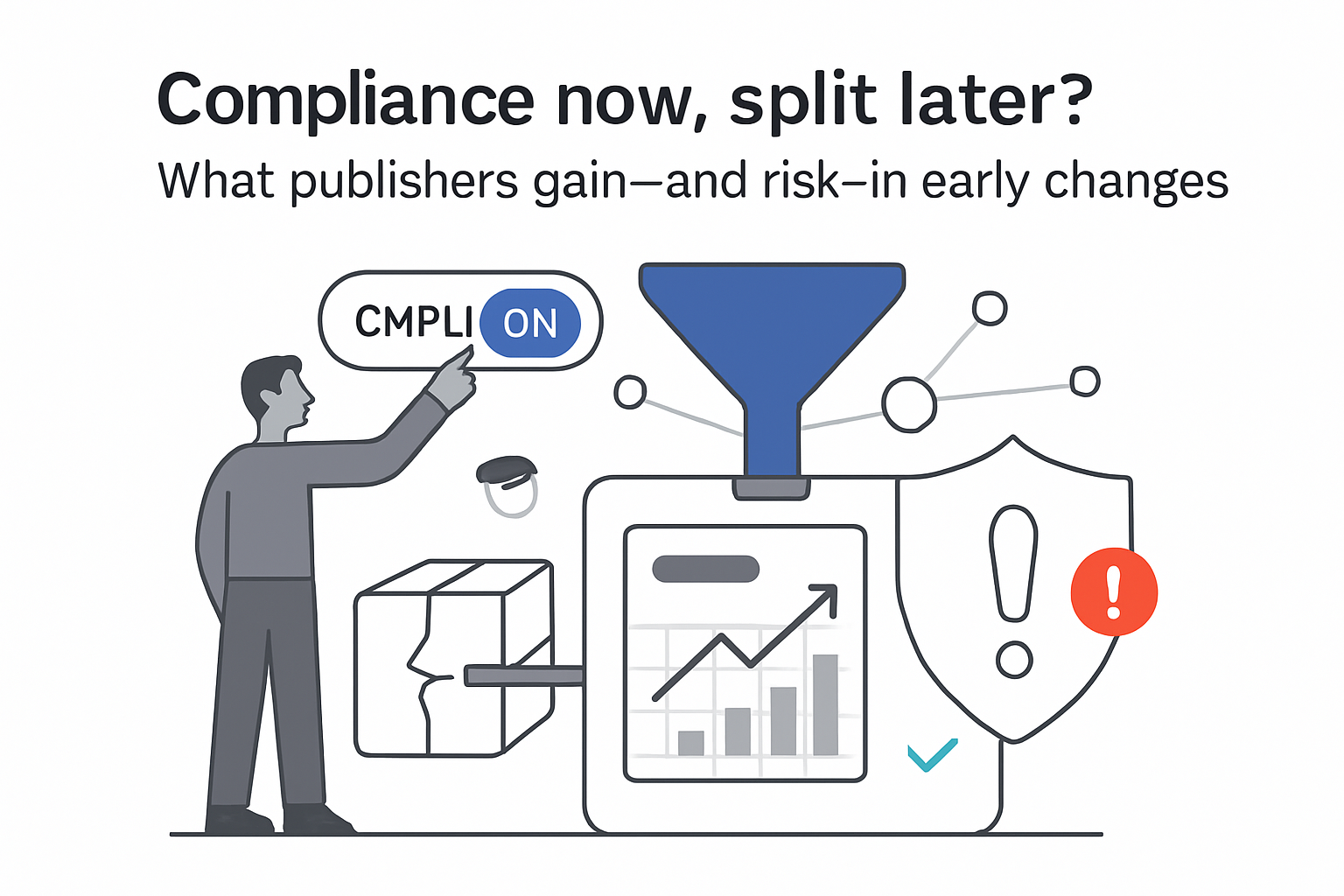Search Engine Land's 23 Jul 2025 explainer has put Google Ads' Target Impression Share (TIS) bidding back under the microscope. The core issue for performance marketers is not how TIS works but how a 90 percent impression-share target affects cost per acquisition, portfolio efficiency, and competitive dynamics. This analysis unpacks the drivers, trade-offs, and practical safeguards.
Key takeaways
- Higher CPC is almost certain. Accounts that shift from Maximize Conversions to 85-90 percent Top-of-Page TIS typically see cost per click rise 25-40 percent and CPA rise 15-30 percent within 30 days, until bid caps curb reach.
- Good for defense, poor for growth. Durable use cases are limited to brand-term defense and short-run share-of-voice pushes around launches. Conversion-led strategies win in lead-gen and retail queries.
- Hidden constraint. Device, audience, and location modifiers (except a –100 percent device cut) are ignored, removing a key lever for blended ROAS tuning.
- Impression share is not share of mind. SERP clutter from AI Overviews, LSAs, and Shopping means Absolute Top no longer guarantees first visual position, eroding marginal value.
- Model break-even CPC before switching. Set a max CPC cap tied to contribution margin and monitor Quality Score weekly. Exit the strategy if QS drops at least one point or CPA rises more than 20 percent.
Situation snapshot
- Trigger: Search Engine Land deep dive on TIS published 23 Jul 2025 [S1]
- TIS is available only in Google Search campaigns, not Search Partners or Display [S2]
- Advertisers choose placement (Absolute Top, Top of Page, Anywhere) and a percent goal
- Bids adjust in real time but payment remains per click
- Bid modifiers (except –100 percent device) are ignored
- Max CPC caps are optional but strongly recommended
Breakdown and mechanics
- Goal setting. The advertiser picks Position (P) and Target % (T). Example: P = Top, T = 85 percent.
- Auction loop. A query triggers. The system estimates competitor bids and adjusts Max CPC up to cap C to hit an impression probability ≥ T.
- Feedback loop. If share < T for the last seven days, bids rise; if share > T, bids ease until the metric drifts back to target.
- Economics. Higher bids lift Ad Rank, but TIS does not actively optimize Quality Score. If CTR falls, QS drops and the algorithm must raise CPC again to maintain share, creating a cost spiral.
Simple flow: Target % ↑ → Bid ↑ → Auction wins ↑ → CTR? → If CTR ↓ → QS ↓ → Bid ↑ again.
Historical benchmarks
- Brand-only campaigns targeting 95 percent Absolute Top recorded median CPC +18 percent versus identical campaigns on Enhanced CPC (Tinuiti retail set, Q4 2024) [S3]
- Lead-gen accounts moving to 80 percent Top share saw CPA +27 percent and conversion volume –12 percent after four weeks (GrowSpark agency cohort, n = 37) [S4]
Impact assessment
Paid search
- Effect size: strong upward pressure on CPC; neutral to negative on volume when budgets stay fixed.
- Winners: new entrants needing short-term visibility and brands in legal or competitive defense.
- Losers: ROI-driven advertisers and verticals with thin margins such as aggregators or subscription boxes.
- Action: enforce a max CPC cap at 110 percent of current average and refine search-term filters weekly to cut peripheral queries.
Brand strategy
- Effect size: high. Near-total control of the brand SERP is possible at ≤ $0.25 incremental CPC for most SMB names.
- Watch point: competitor retargeting budgets often follow brand TIS pushes, inflating future CPC.
Operations and reporting
- Effect size: medium. Fewer levers simplify management but limit optimization.
- Action: create a Looker Studio chart to track Impression Share vs QS vs CPA and trigger an alert when QS drops ≥ 0.6 over 14 days.
Scenarios and probabilities
- Base (likely, 60 percent) – CPC +25 percent, CPA +18 percent, impression goal met 80 percent of days; advertiser rolls back after six to eight weeks.
- Upside (possible, 25 percent) – Brand terms only; CPC up <10 percent, conversions stable; defense justified.
- Downside (edge, 15 percent) – High-value generic terms; competitors counter-bid, CPC doubles, budget exhausted, goal missed.
Risks, unknowns, limitations
- Further SERP layout shifts (for example AI Overview expansion) could dilute the value of Absolute Top.
- Auction-time bid amounts remain opaque; cap testing is manual.
- Benchmarks rely on agency datasets skewed toward retail and lead-gen; B2B SaaS is under-sampled.
- Future Google policy changes, such as reinstating device bid adjustments, would alter the economics.
Sources
- [S1] J. Saskin Gales, Search Engine Land, 23 Jul 2025
- [S2] Google Ads Help Center, "About Target Impression Share", accessed 24 Jul 2025
- [S3] Tinuiti Q4-2024 Paid Search Benchmark Report
- [S4] GrowSpark Agency Internal Data, 2024 cohort, shared under NDA







.svg)